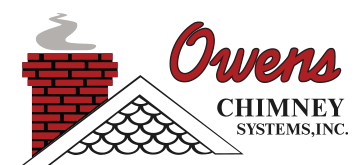You look at a chimney and the components of it would seem obvious. However, that is hardly the case. Chimneys have multiple parts and homeowners should be aware of them all. Having a basic understanding of the anatomy of a chimney will help you to better understand your annual inspection report as well as just having a basic understanding of how the chimney works.
- Chimney Cap – this is placed at the top of the chimney and has the appearance of a small roof. With the addition of a fitted screen, the cap will keep out small animals as well as preventing water and leaves from directly entering the chimney.
- Chimney Chase – this term is used mainly to describe the case around a factory made chimney.
- Chimney Crown – this is the extended area at the top of the chimney. It offers some protection at the top of the chimney for elements and water damage.
- Chimney Damper – this s the lever located at the bottom of the chimney, which you have access to by reaching up and into the chimney. It is used to open and close the chimney. Since heat will escape out the flue when the chimney is not in use, most people will close this when the chimney is not being used. In addition, it is an added safeguard for the chimney cap.
- Flue – this is the open air space where the gas travels out of the home.
- Flue Lining – this is the inner shell of the chimney and is completely separate from the outer lining. This can be damaged on its own and can be replaced without the outer masonry sections of the chimney needing repair.
- Smoke Chamber – the smoke chamber is located at the bottom of the flue and serves to compress the air without causing a back draft. The chamber is designed with sloping walls that lead into the flue.
- Smoke Shelf – This is a small shelf located behind the damper at the bottom of the smoke chamber. This flat area can prevent outside element, dirt, and debris from falling into the fireplace.
